London ULEZ: what is the Ultra Low Emission Zone?
The London ULEZ will expand on 29 August 2023 to cover all of the city’s boroughs. Our guide explains what it means for drivers in London
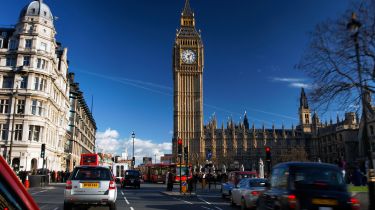
London’s Ultra Low Emission Zone (ULEZ) was originally introduced in April 2019, covering the same Central London area as the London Congestion Charge. On 25 October 2021, the ULEZ boundary was extended to the North and South Circular roads that surround London, and on 29 August 2023 this was expanded to include every borough in London.
 The 10 best electric cars in 2025
The 10 best electric cars in 2025
The ULEZ charging zone superseded the T-Charge zone (the T stands for toxicity), and was introduced to reduce emissions of harmful nitrous oxides and particulates caused by older petrol and diesel cars in the areas of London it covers. It’s also intended to promote the adoption of lower emission and electric models, along with alternatives including public transport and cycling, with the aim of improving air quality in the capital.
Where is the ULEZ in London?
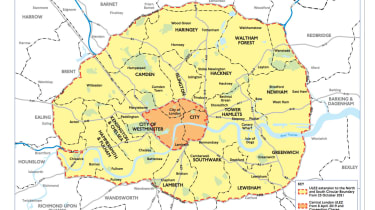
Originally, the London ULEZ only covered the same area as the Congestion Charge zone in central London, though the ULEZ boundaries have been increased since then. As of 29 August 2023, the London ULEZ will be expanded to every borough in London, and owners of cars that do not comply with the ULEZ emissions regulations will need to pay a daily charge to drive in the zone.
ULEZ expansion
After its introduction in Central London in April 2019, the ULEZ boundary was expanded from the original zone out to the North and South Circular roads that surround London on 25 October 2021. The latest extension will see every borough in London covered by the ULEZ from 29 August 2023 onwards.
While the scope of the London ULEZ has increased, the charging rules and tariffs for the zone remain unchanged. As such, owners of non-compliant cars will still need to pay a daily charge to drive their car in the zone. However, you won’t need to pay anything if your car has been parked for that day, even if it doesn’t comply with the ULEZ emissions rules.
To support this rollout of the ULEZ, Transport for London (TfL) has expanded the eligibility of its ULEZ scrappage scheme to every borough in London. From 29 August 2023, all residents of London who apply for their non-compliant car to be scrapped will be eligible for a grant of up to £2,000 to be used towards the purchase of a ULEZ-compliant car. Prior to this, the scrappage grant was only open to Londoners living in the ULEZ area who received Child Benefit or certain disability and low-income benefits.
Additional support will be available for disabled drivers with non-compliant wheelchair accessible cars – they can apply for either a £10,000 scrappage scheme grant, or a £6,000 payment towards making their current car adhere to the ULEZ rules. Some London authorities have also announced plans for their own ULEZ scrappage schemes. For example, Wandsworth Council and Merton Council have said they’ll offer a scrappage grant of up to £1,000 for eligible residents, on top of the TFL grant.
However, the London ULEZ expansion has come under fire from some motoring groups. The AA has warned as many as 300,000 Londoners will be affected by the ULEZ expansion; claiming “large numbers of them” may be unable to replace their current car with a compliant one. Likewise, the RAC has expressed concern over the expansion of London’s ULEZ “at a time where drivers can ill afford to replace their vehicles during a cost-of-living crisis”.
ULEZ charging: enforcement times and pricing
ULEZ charging operates 24 hours a day, every day, including all bank holidays with the exception of Christmas Day, and costs £12.50. This differs from the £15 per day congestion charge zone in central London that operates Monday to Friday between 7am to 6pm, as well as 12pm to 6pm on weekends and bank holidays. There is no charge between Christmas day and New Year's day.
Payment for ULEZ can be made up to 90 days in advance, or you can pay by midnight on the day you drive through the charging zone. If you fail to pay your ULEZ charge on time, you will face a penalty charge of £160 (reduced to £80 if you pay within 14 days).
You can pay the ULEZ charge online via the TfL website, or the ‘TfL Pay to drive in London app’ (available for both Apple and Android smartphones). Monthly payment for regular visitors to London is also available via TfL’s monthly ‘Auto Pay’ system.
How to ULEZ check your car
The good news is that more cars are exempt than you might have thought. To avoid the charge, you’ll need a petrol car that’s Euro 4 compliant, a diesel car that’s Euro 6 compliant, a hybrid that meets these requirements or an electric car.
All petrol cars registered from 1 January 2006 onwards comply (although some models from as early as 2001 meet the restriction), while your diesel car should comply if it was registered in or after September 2015. London taxis are also exempt, despite many of them featuring high-polluting diesel engines. If you’re in doubt, check your vehicle on the Government’s free checker.
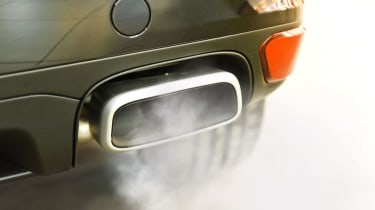
Is ULEZ going to be replaced?
Road pricing being introduced in place of congestion charging and low emissions zones has been touted as a future option, however this is likely to be many years away as new technology would need to be developed and rolled out.
For now the existing camera-based system is likely to remain, meaning drivers of non-compliant cars will need to be aware if they have entered the zone and pay the charge to avoid being fined.
Londoners have been invited to share their views with TfL on the future of such zones and their implementation.
What does ULEZ mean for car buyers?
When the ULEZ charging zone was originally introduced in central London, City Hall predicted its enforcement would result in a near-50% reduction in NOx emissions. It does, however, massively increase running costs for motorists and businesses that regularly drive older vehicles in London. The zone’s expansion only exacerbates this problem; more people who rely on older vehicles and can’t afford to upgrade to newer, compliant models will be affected.
If you own a car with a diesel engine and you didn’t buy it brand new within the last seven or so years, it’s very unlikely that it’ll comply with the standards required under ULEZ. This will make driving regularly in London expensive, at £27.50 a day (this figure assumes you’re driving in an area also covered by the Congestion Charge, during its hours of operation).
As things stand, the only alternative to leaving your car at home or paying the ULEZ charge if your car is non-compliant is to upgrade to a car that is. Every car registered in the UK from September 2015 is exempt from the ULEZ charge. Since they have no tailpipe emissions, electric cars don’t have to pay to enter the London ULEZ either, and they’re also exempt from the London Congestion Charge, via TfL's 'Cleaner vehicle discount, until 25 December 2025.
It’s clear that reducing the number of diesel vehicles that don’t comply with the latest emissions standards will play a key role in plans to improve air quality and lower NOx levels in London and across the country.
Why was the ULEZ introduced?
The issue of pollution caused by diesel cars has been an increasingly hot topic of late. The levels of NOx measured in Britain have been above air pollution limits set by the EU since 2010. As the biggest city in the UK, London suffers from particularly poor air quality; some of the capital’s busiest roads had already exceeded their annual NOx limit in the first few days of 2017.
An investigation carried out by the Guardian and Greenpeace found that thousands of children are being exposed to damaging levels of NOx when they go to school or nursery, and the problem is most acute in London. The air around a nursery in Tower Hamlets in East London was found to contain four times the legal amount of NOx. A study conducted by King’s College London suggests that around 9,500 premature deaths a year occur in London due to NOx emissions.
Increased public awareness thanks to coverage in the media means London Mayor Sadiq Khan and the Government are coming under mounting pressure to tackle air pollution.
Best ULEZ exempt cars
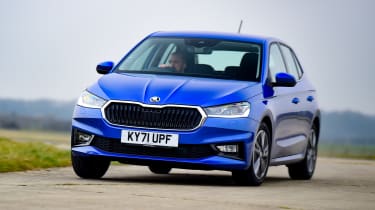
Skoda Fabia
Superminis make good sense for driving down London’s narrow and traffic-clogged streets, and one of the best you can buy is our Small Car of the Year for 2023, the Skoda Fabia. Not only is it very well equipped, but it’s practical, well built and very easy to drive. Plus, it has a comfortable ride, which bodes well if your route through London has a lot of potholes and speed bumps. The Skoda Fabia’s engine range consists entirely of small petrol units, all of which comply with ULEZ rules.
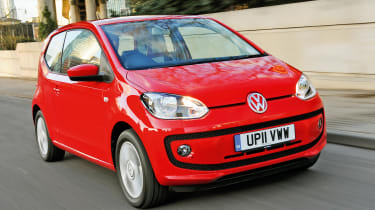
Volkswagen up!
A robust small city car that is surprisingly roomy inside isn’t always easy to find but the smallest car from Volkswagen blends these traits admirably. The large windows give lots of visibility to spot cyclists and pedestrians as well giving you the sight lines you need when parking in a tight spot. Excellent fuel economy, cheap road tax, and low maintenance fees mean running costs are low too.
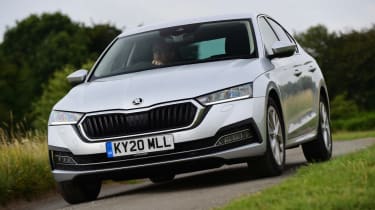
Skoda Octavia
Our second Skoda on this list is the most practical family hatchback on sale, the Octavia. Its stretched Volkswagen Golf platform means it’s actually far more spacious than the VW, and the interior is rugged and built to last. All of the Octavia’s engines are ULEZ compliant, and you have a few options to choose from: there are turbocharged petrols and diesels, as well as a petrol-electric plug-in hybrid for Octavia iV cars.
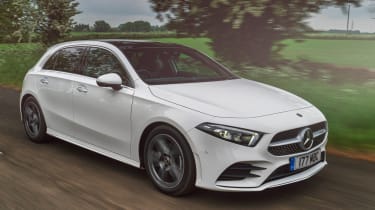
Mercedes A-Class
Adding a splash of luxury to this list is the Mercedes A-Class, which features a stunningly opulent interior. You can choose two large screens to show all your driving and infotainment information, and the entire cabin feels as elegant as the more expensive C-Class. Add smart looks to the mix, and you’ll attract lots of attention in the London traffic.
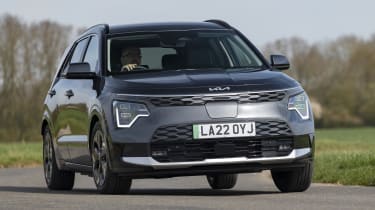
Kia Niro
All hybrids and electric cars are looked upon kindly in London, and our favourite is the Kia Niro. It’s a terrific all-rounder, and makes a great pick if you’re after a roomy, well-equipped and easy-to-live-with family car. The Niro EV makes a lot of sense if you regularly drive in central London, since it’s exempt from the Congestion Charge, though there are conventional hybrid and plug-in hybrid versions if you’re not quite ready to make the switch to an all-electric car.
If you regularly drive in central London or other low emissions zones see our top 10 best congestion charge exempt cars.
Recommended

Suzuki’s new 10-year warranty is free – here’s how to get it
Most Popular
Tips & advice

Car dashboard warning lights: what does each symbol mean?

Electric car charging stations: public networks, charger types, apps and maps










